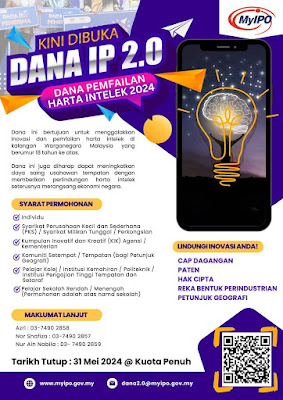Malaysia is a developing country that aims to become a high-tech industrialized nation by 2030. To achieve this goal, the government has launched the
New Industrial Master Plan (NIMP) 2030, which outlines the strategies and actions to transform the country's industrial sector.
The NIMP 2030 is different from the previous industrial master plans, as it adopts a mission-based approach that focuses on four key areas: advancing economic complexity, teching up for a digitally vibrant nation, pushing for net zero, and safeguarding economic security and inclusivity.
Here are some of the highlights of the NIMP 2030 and what they mean for Malaysia's industrial development.
Enhancing Economic Complexity
Economic complexity refers to the diversity and sophistication of a country's productive capabilities and exports. A higher economic complexity indicates a higher level of knowledge, technology and innovation in the economy.
The NIMP 2030 aims to increase Malaysia's economic complexity index (ECI) from 1.07 in 2021 to 1.5 by 2030, to be on par with developed countries.
To do this, Malaysia has identified several potential clusters that can be developed, such as electrical and electronics, machinery and equipment, aerospace, medical devices, renewable energy, biotechnology, halal products, and creative industries.
Another key strategy is to increase the research expenditure to 3.5% of GDP by 2030, which would boost the innovation capacity and competitiveness of the industries. The plan also aims to strengthen the linkages between universities, industry and government to foster collaborative research and development.
One of the enablers for research and innovation is intellectual property (IP), which protects and rewards the creators of new knowledge and technology. The NIMP 2030 recognizes the importance of IP for industrial development and aims to improve the IP system in Malaysia.
Some of the initiatives include digitizing and accelerating IP applications; facilitating IP commercialization and monetization; and strengthening IP enforcement and protection.
Building SME's Capacity
Small and medium enterprises (SMEs) are the backbone of Malaysia's economy, accounting for 98.5% of business establishments, 38.9% of GDP, 48.4% of employment and 17.9% of exports in 2021.
The NIMP 2030 aims to enhance SMEs' capacity and resilience by helping them to upgrade their products, processes and business models; diversity their markets and customer segments; increase their productivity and efficiency; improve their quality and standards; adopt digitalization and automation; and integrate into regional and global value chains.
Some of the initiatives include providing technical assistance and advisory services; facilitating access to technology platforms and solutions; offering training and upskilling programs; and supporting branding and marketing activities.
Embracing ESG Principles
Environmental, social and governance (ESG) principles are a set of criteria that measure a company's performance on sustainability issues such as environmental protection, social responsibility, human rights, diversity, ethics and corporate governance.
The NIMP 2030 aims to embrace ESG principles as a core value of Malaysia's industrial development by promoting green growth, social inclusion and good governance across all sectors and industries.
Ministry of Investment, Trade and Industry
Some of the initiatives include implementing low-carbon policies and measures; encouraging renewable energy generation and consumption; reducing waste generation and increasing recycling rates; enhancing environmental management and compliance; ensuring fair labour practices and decent work conditions; supporting social enterprises and community development; improving corporate transparency and accountability; combating corruption and fraud; and strengthening stakeholder engagement and participation.
Conclusion
The NIMP 2030 is a comprehensive and ambitious plan that aims to transform Malaysia's industrial sector into a high-tech, high-value and high-impact engine of growth for the country. By enhancing economic complexity, creating supportive ecosystems, building SME's capacity and embracing ESG principles, the plan hopes to achieve Malaysia's vision of becoming a high-tech industrialized nation by 2030.









